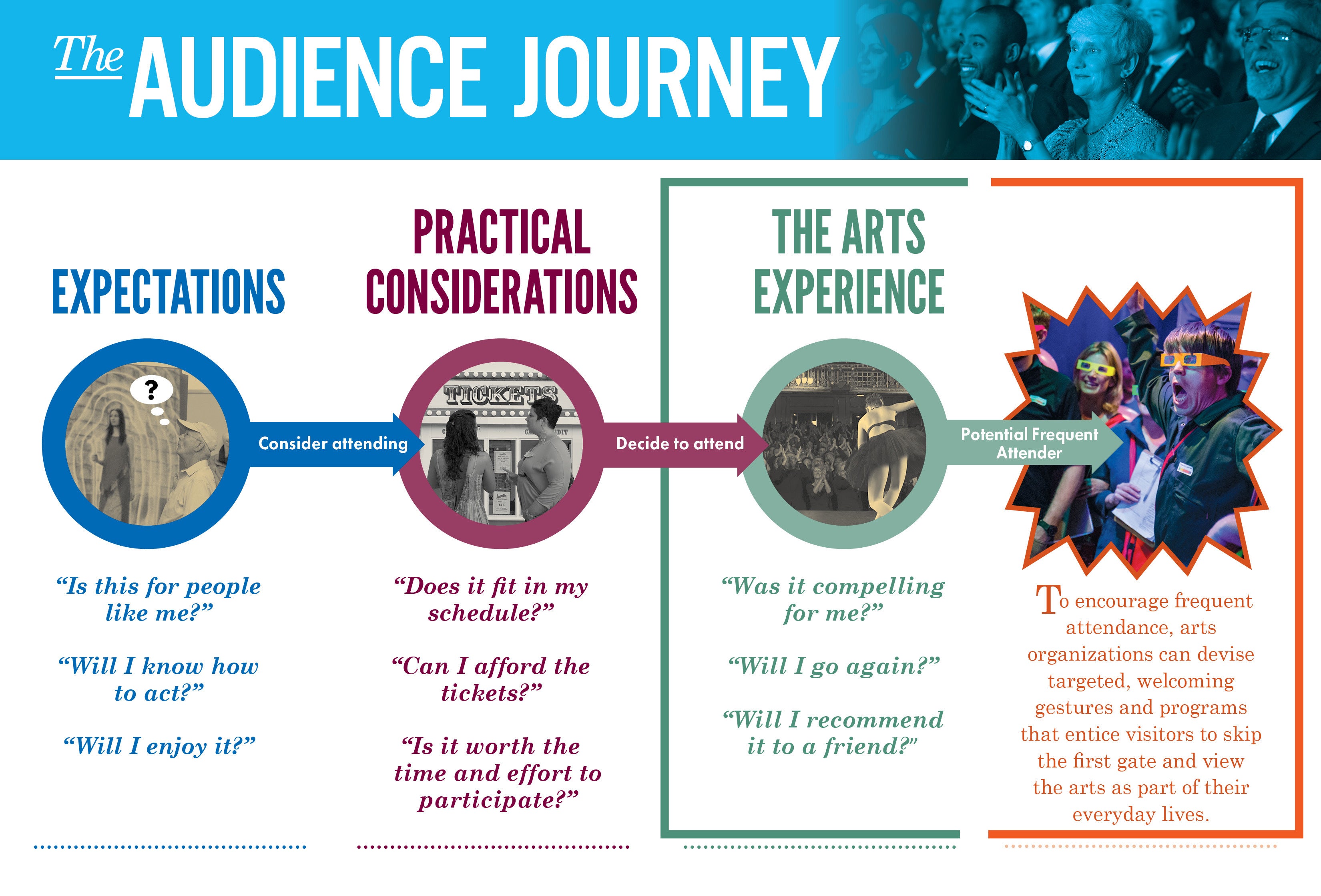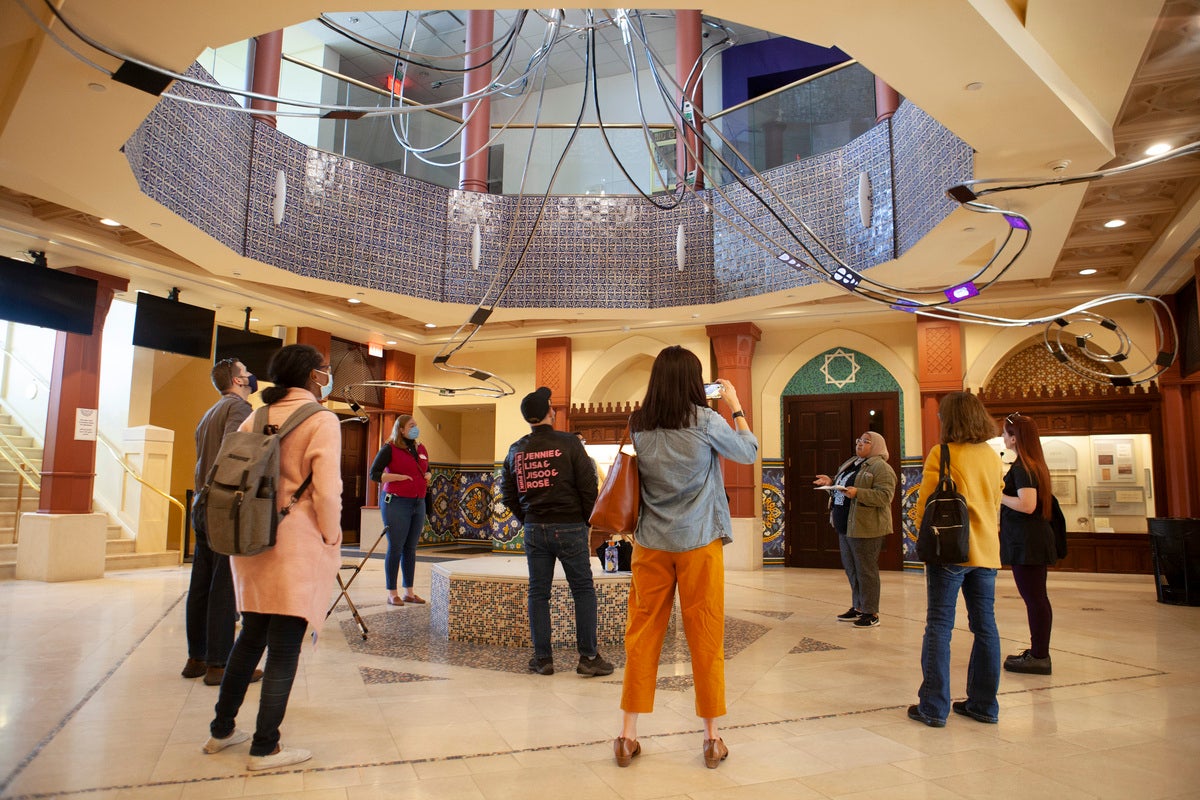If you could attract neophyte audience members and get them to return by buying them a glass of wine, wouldn’t you do it? And if it was even easier to get them to the next step, becoming regulars—say, all it took was greeting them by name—wouldn’t you do that?
At the third gate in the decision-making journey potential audience members navigate, they are looking to have compelling, rewarding experiences, while arts organizations are hoping to not only meet those expectations but also exceed them. For it’s a truth readily acknowledged that getting new audience members through the door once is easier—but also more costly—than getting them to return. With attendees who have come at least once before, arts organizations are not starting their overtures on the first note.
Recent research shows that, aside from seeking emotional, mental, and social engagement with the arts, potential attendees—especially members of the millennial generation—are increasingly seeking a “total experience.” They want to have fun and connect with others just as much as they want to be enlightened or entertained by the art they are seeing.

That’s why the Denver Center Theatre Company staged a large-scale immersive production called “Sweet & Lucky” at an offshoot called Off-Center. These interactive performances, designed to engage a generation that is used to immersive, participatory experiences, sold out to attendees with an average age of 41 (vs. 53 for traditional productions). In post-performance surveys, 94 percent of that group rated the play “very rewarding” or “extremely rewarding.” Another key component of the evenings was a purpose-built bar where audience members could socialize before and after the show—meeting another demand of a generation that likes to network.
The Opera Theatre of St. Louis, another participant in The Wallace Foundation’s six-year, $61.5 million “Building Audiences for Sustainability” initiative, didn’t modify its opera offerings, but it too discovered that the opportunity to socialize was crucial to a better return on its outreach initiatives. In 2016, OTSL invited newcomers to attend a pre-performance wine reception, then measured its success. It discovered that 21 percent of the new-to-file audience members who attended the wine welcome returned in 2017 vs. only 17 percent of those who had not attended the wine reception. Joe Gfaller, Director of Marketing and Public Relations, said that OTSL will continue the wine receptions: “It’s a very low-cost, worthy investment.”
Further on the continuum of reducing audience churn, the Seattle Symphony has been successful, with even less expense, at keeping new subscribers. The orchestra simply assigned staff members to greet them by name (learned as their tickets were scanned) when they arrived at Benaroya Hall and to say that the Symphony was happy that they’d come for the performance. “What we found,” said Charlie Wade, Senior Vice President for Marketing and Business Operations, “is that, in fact, the people that we greet renew at a significantly higher rate than people that we don’t greet.” In the 2016-17 season, that tally was 41 percent versus 29 percent.
During the 2017-18 season, the Symphony greeted more than 900 subscribers, nearly double the first year’s number, and the rate of renewal among them remained significantly higher, too. “It earned us on the order of $60,000 more” in subscription sales, Wade said.
These initiatives are elements of what has become known as the “surprise and delight” approach to enhancing the total customer experience: it involves giving attendees an unexpected reward that cultivates a bond with them and therefore fosters loyalty. These gestures often turn people into frequent attendees.
Taking this idea a step further, the Seattle Symphony has for the last two years provided customer experience training to all employees who interact with the public, from parking attendants to food and beverage servers to box office staff. They learn to greet all guests with a smile, eye contact, and a welcome (though they do not have access to names); to listen, care about, and anticipate rather than react to customer desires; and to end each interaction effectively, perhaps inviting audience members to return. As a result, Wade says that customer satisfaction, measured in surveys, has climbed in each of the last three years, undoubtedly helping with customer retention.
Younger audiences in particular say in surveys that it’s not quite enough for an arts experience to be engaging; they are looking to go to places where they feel an emotional tie, have positive interactions, and experience a sense of community. Efforts like these examples may well help turn first-timers into multi-timers.
This three-post series outlines the Audience Journey, a conceptualization of people's decision-making process when choosing to attend an arts performance, exhibition or event. This post focuses on how to create a rewarding experience that makes people want to return. Other posts suggest ways organizations might engage people who are less inclined to participate in the arts and how to combat the practical barriers of participation. All posts originally appeared on the National Arts Marketing Project's blog and are reprinted here with permission.




